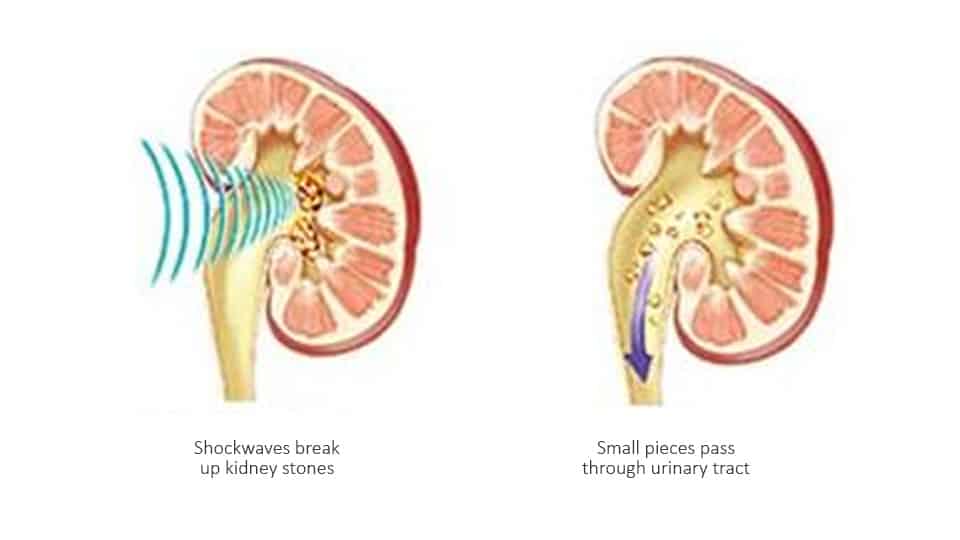Extracorporeal Shock Wave Lithotripsy (ESWL)

What are urinary stones?
Urinary stones are solid accumulations of mineral that form in the tubules of the kidney or bladder. They look like any other pebbles in the garden and can be found in the kidney, ureter or bladder.
What causes urinary stones?
Urinary stones form when the urine becomes too concentrated with salts and other metabolic byproducts. A high mineral content and low urine or fluid content creates kidney stone.
- Dehydration
- Drinks too little water
- Loses too much water (e.g. through sweating)
- High dietary intake of certain minerals
- Genetically (in-born) higher excretion of certain minerals in the urine
Symptoms
- One-sided abdominal pain, usually from the loin (upper back beneath the ribs) to groin (lower abdomen near the thigh) and associated with nausea and vomiting
- Blood in the urine
- Frequency, urgency and discomfort in passing urine
- However, on occasions, there will be no symptoms
Extracorporeal Shock Wave Lithotripsy (ESWL)
Since the advent of Extracorporeal Shock Wave Lithotripsy (ESWL), it has redefined the term minimally invasive treatment for stones. More accurately, this is a non-invasive procedure where energy in the form of shock waves is channelled to the stone externally, causing the stone to break up. The uniqueness of this device is its exploitation of shock waves focus. Relatively weak non-intrusive waves are generated externally and transmitted through the body and built to sufficient strength only at the site of target to break a stone. Once the stone is fragmented, they will pass out spontaneously through the normal passage in the urine.
EWSL is suitable for most stones in the urinary system from the kidneys, ureters to the bladder. It is carried out as a day surgery procedure and the patient can expect to return to work the following day. The procedure takes less than an hour and no anaesthesia is required. The success rate for this treatment ranges from 60% to 90% for a single procedure, depending on the location of the stone.
Occasionally, an additional procedure may be required for larger stones. Due to the non-invasiveness of this procedure, complications are rare (less than 5%) but may include urinary tract infection, blood in the urine, abdominal pain due to stone fragments and kidney haematoma (which is very rare).


